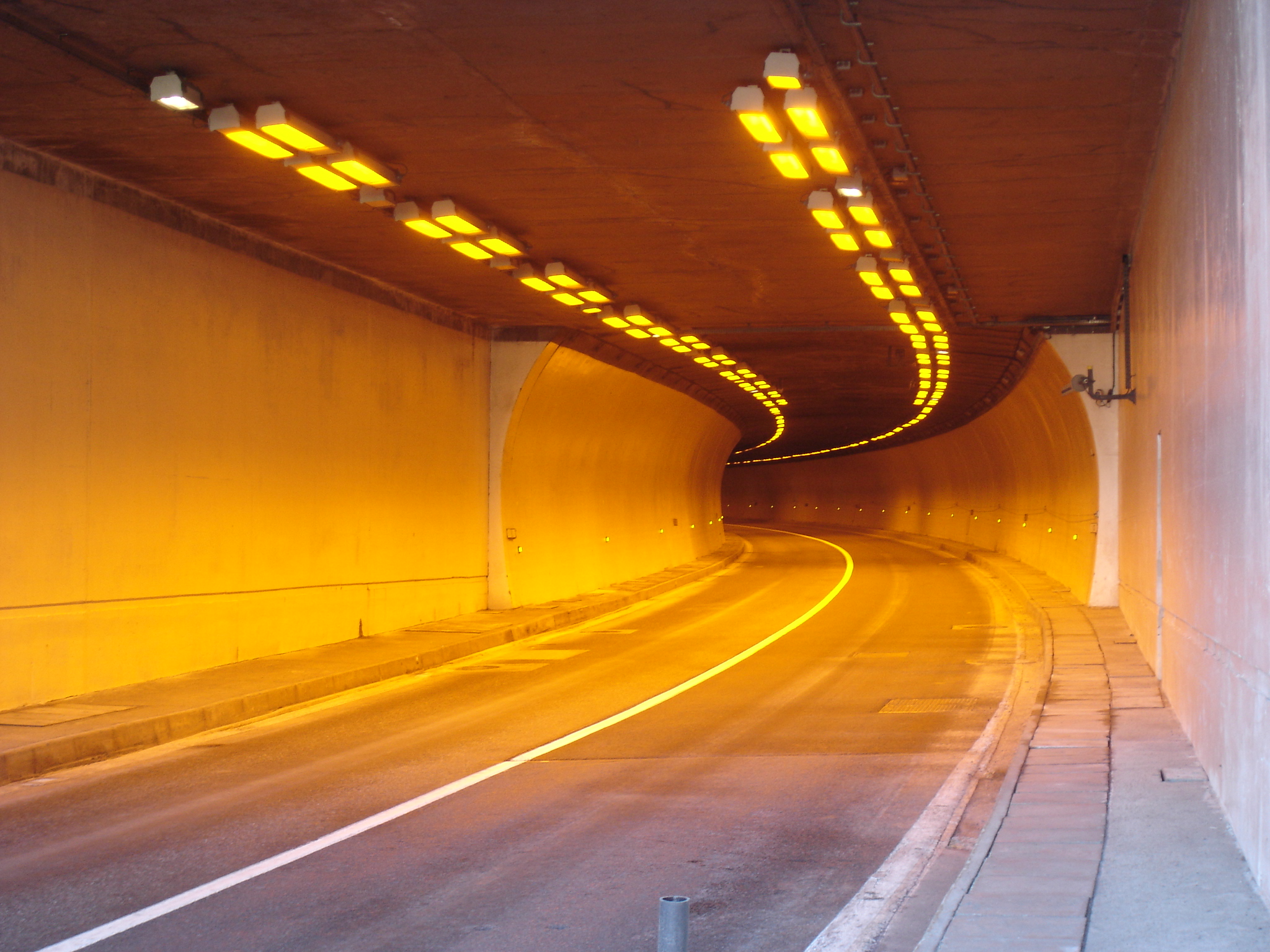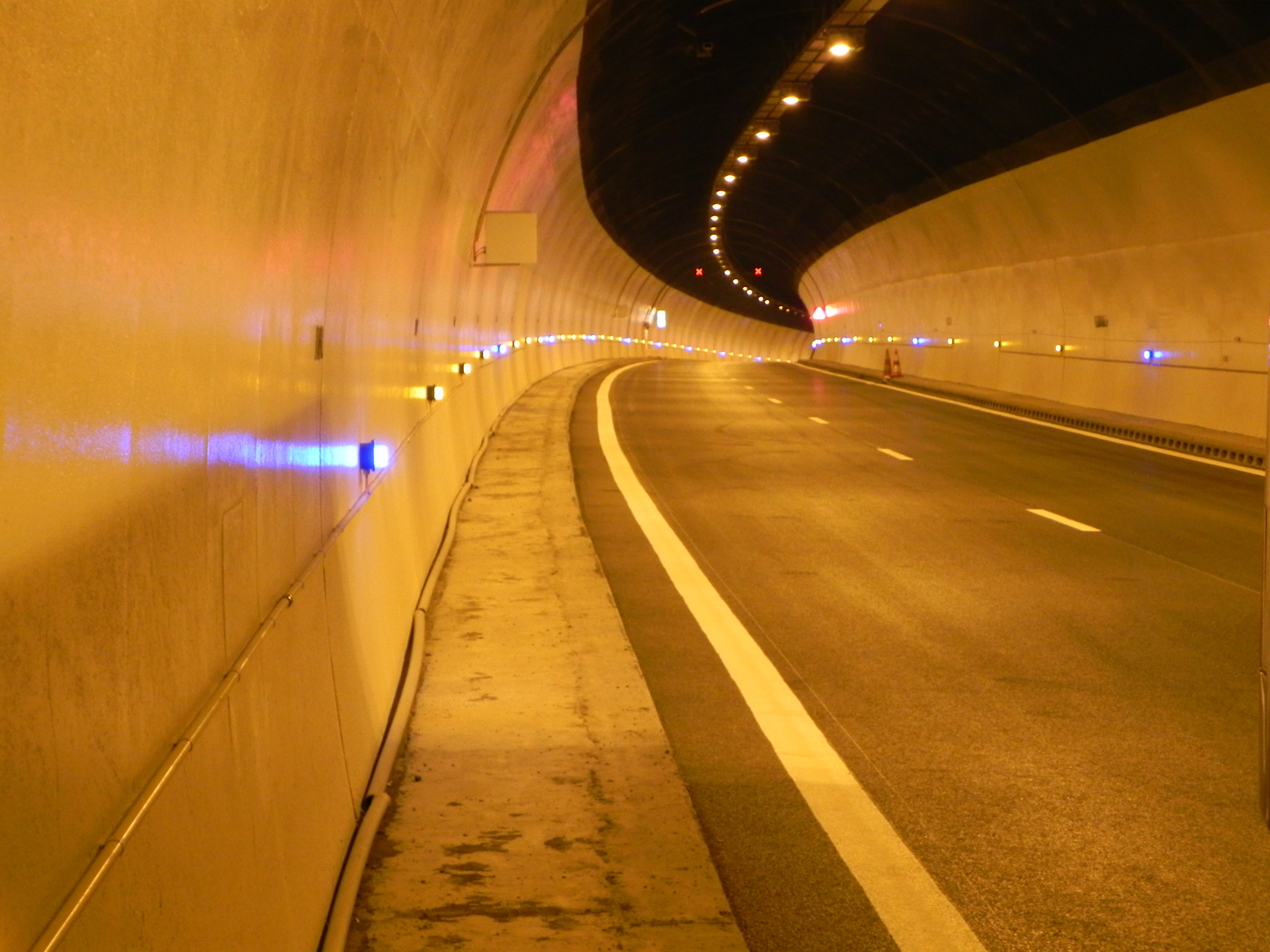Tunnel lighting system
In the majority of tunnels, the natural penetration of light does not allow satisfactory visibility for users. It is therefore necessary to install artificial lighting to improve visibility conditions and comfort.
In terms of functionalities, the lighting installation must allow for:
- normal lighting that provides appropriate visibility for users, both day and night
- safety lighting that provides minimum visibility for users, to enable them to leave the tunnel in their vehicles in case of power outage.
- evacuation lighting, such as evacuation marker lights, to guide tunnel users on foot in the event of an emergency.
Normal artificial lighting usually includes two successive zones:
- an entrance zone (also called a reinforcement zone) where the lighting level is reinforced at the tunnel entrance and gradually decreases further along the tunnel
- an interior zone that corresponds to the rest of the tunnel. In this area the lighting level is constant and much lower than in the entrance zone.
In some tunnels, where there is a risk of glare at the exit, there is an exit reinforcement zone.

Entrance lighting
Motorists approaching a tunnel entrance will often experience what is known as the “black hole effect”. This is because luminance levels inside the tunnel are much lower than those outside and our eyes have difficulty adapting to the sudden difference. To alleviate this effect, a higher, “reinforced” level of lighting must therefore be provided at the tunnel entrance. This will ensure that drivers can see objects within the correct stopping distance before entering the tunnel. It will also help to prevent them from slowing down, which is important to maintain optimal traffic flow.
The amount of light required to avoid the black hole effect will depend on the brightness outside the tunnel (sunny or cloudy weather). Luminance measurements at portals are normally used to determine and adjust the lighting levels required for the entrance zone.
In order to enable drivers’ eyes to adapt from the entrance zone lighting to the interior zone lighting, the entrance lighting level is gradually reduced as drivers move along the tunnel.

Interior zone lighting
Once drivers have adapted to the lower luminance levels in the tunnel, sufficient lighting is needed in the interior zone for safe passage. Luminaires in the interior zone are therefore spaced at regular intervals, throughout the rest of the tunnel. Daytime and night-time levels of interior zone lighting are controlled by a photoelectric cell.
The design of a lighting installation should respect several criteria, notably those relating to the:
- level of luminosity and lighting on the pavement
- level of luminosity and lighting on the side walls
- uniformity values for the different operating regimes
- glare values.
Several types of installations are possible; the most common are symmetrical lighting and counter-beam lighting.
Symetrical lighting
In symmetrical lighting systems, light is distributed symmetrically with respect to a plane perpendicular to the axis of the tunnel. An equal amount of light is sent towards each end of the tunnel. This system is generally used in the interior zone. It may be used in the entrance zone for tunnels which have a slow approach speed or where there is not enough room to install lighting fixtures above the carriageway.
Counterbeam lighting
Counterbeam systems project light in the direction of motorists, in conditions that avoid dazzling. This type of system, which should be fitted above the carriageway and facing the traffic flow, uses the photometric properties of the pavement (brightness and specularity). It is suitable for use in entrance zones if there is sufficient room to install light fixtures above the carriageway. It has advantages in terms of investment costs and operation costs, especially when the approach speed is relatively high (>70 km/h).
In addition to the type of lighting system, attention should also be paid to coatings on the side walls of tunnels which can affect the overall efficiency of the chosen system. For symmetrical lighting, wall coatings should preferable be light coloured. In the case of counterbeam systems, darker, but more specular coatings are preferred.
Depending on the characteristics of the tunnel and the type of lighting system, the light fittings may be installed in one or more rows, above the road or at the top of the side walls.






